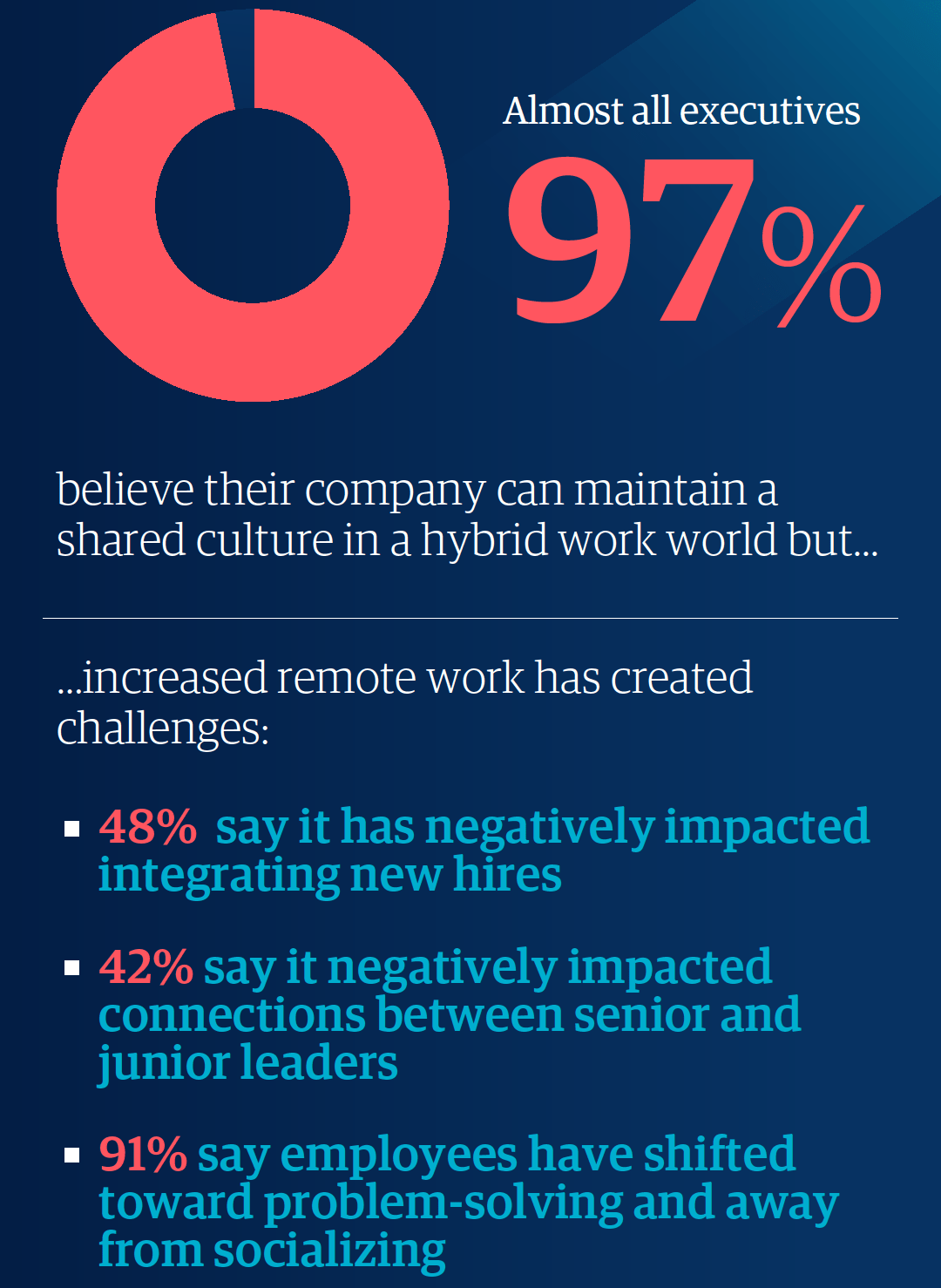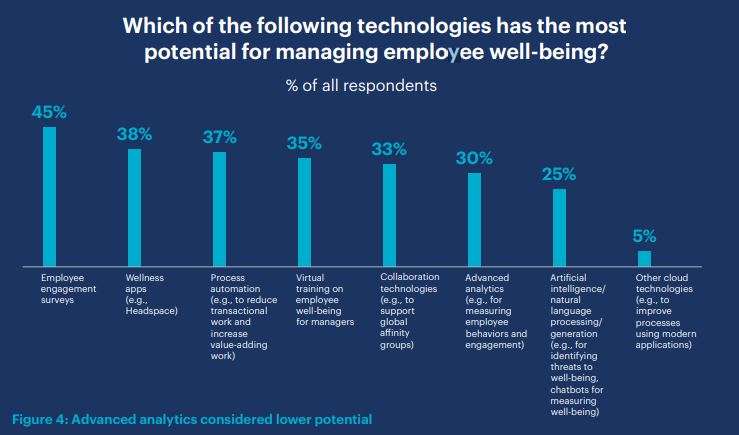Why companies need to move away from traditional employee surveys: The Genpact story

Highlights
- Remote working has negatively impacted the ability of 48 per cent of businesses to integrate new hires into their culture.
- Almost everyone (91 per cent) agrees that since the pandemic’s onset, employee interactions have shifted toward problem-solving and away from socialising.
- Genpact CHRO suggests companies need to move away from employee surveys that are tied to a point-in-time and move toward artificial intelligence-powered solutions.
- Last year, Genpact launched Watercooler, a match-making bot that helps orchestrate serendipitous meetings with people outside of one’s immediate work circle, enabling people to build robust networks.
As the world is recovering from the pandemic, amidst the most intense talent market conditions, companies have finally started looking inward to focus on scaling and driving employee experience at length.
A study, which reflects input from 500 senior executives from large global enterprises, underscores technology’s critical role in employee engagement and organizational culture.
Indeed, among the respondents whose organizations were the biggest adopters of new technologies during the pandemic, 76 percent strongly agree that their company can maintain its culture in a hybrid working environment, vs 35 percent of others, as per ‘Tech for Progress 360’ report by Genpact and FORTUNE Brand Studio.
This comes in the backdrop when remote working has negatively impacted the ability of 48 percent of businesses to integrate new hires into their culture, and the connection between senior and junior leaders in the other 42 percent of businesses.

“Companies need to move away from employee surveys that are tied to a point-in-time and move toward artificial intelligence-powered solutions that provide a deeper understanding of employee wellbeing, sentiment, and needs in real-time,” Piyush Mehta, CHRO, Genpact, told ETHRWorld.
One of the key technology interventions that have turned out to be a wonderful tool for Genpact, especially in this hybrid work model, is its digital chatbot, Amber, which enables the IT service management company to keep a pulse on employee sentiment and morale in real-time.
The Genpact experience
The study says it’s also evident that people and their employers need to agree on working arrangements. A 2021 McKinsey & Company study indicated that the proportion of employees who favor working on-site declined from 62 percent to 37 percent as a result of the pandemic.
Yet, in Genpact’s survey, only 24 percent of executives say their companies will base schedules mainly on employee preference. Maintaining an open mind about work arrangements is the best approach, says Darren Saumur, Global Operating Officer at Genpact, which moved close to 1,00,000 people to working virtually.
“At the beginning, our thought was, “Well, let’s work from anywhere, forever,” Saumur explains, adding, “But as we tracked employee sentiment, we realized the downsides, especially as people found it harder to feel connected to our culture. The need to maintain social interactions, training, and mentoring emerged as themes to focus on.”
Supporting Saumur’s points, Mehta feels businesses that devote similar effort, investment, and focus to the internal initiatives as they do to the external, to improve the overall employee experience, are the real heroes of tomorrow. “Doing so not only helps increase retention, but also enhances efficiency, and strengthens the bottom line,” he adds.
For instance, last year, Genpact launched Watercooler, a match-making bot that helps orchestrate serendipitous meetings with people outside of one’s immediate work circle, enabling people to build robust networks.
Watercooler replicates those fleeting moments of friendly conversations and connections that happened at the office but is more difficult to foster when working from home yet are crucial to organizational and personal success.
It uses organizational network analysis, a transformative branch of science that understands an organization’s communication patterns for talent analytics, to pair people who have informal or infrequent ties with each other, for a quick 15 minutes catch-up.

It automatically schedules time on their calendars at a mutually convenient time based on their preferences. Not only does this aim to recreate the ‘bumping into someone at work’ phenomenon, but it also strengthens connections by building relationships globally that otherwise may not have existed.
“Our teams have adopted it with great enthusiasm, so much so that in the first 6 months of its launch, we had over 30,000 meetings scheduled,” Mehta shares.
The Key Takeaways
There are many lessons in workplace innovation that will enable the next generation workforce.
For example, the report cites a large communications company that created an enterprise social site within its intranet that connects employees — including those who might never have otherwise met — to share stories, discuss best practices, socialize and collaborate, allowing associates and leaders to connect on a more human level.
While nearly all respondents (97 percent) believe their company has a shared culture it can maintain in a hybrid working environment, the report highlights fundamental areas businesses need to address, which if left untouched, could jeopardize their ability to maintain a community of shared values and positive employee experience:
- Network building: Almost everyone (91 per cent) agrees that since the pandemic’s onset, employee interactions have shifted toward problem-solving and away from socialising.
While there are some positive benefits to this problem-solving focus, casual exchanges with colleagues enable people to build their networks and integrate with the culture.
- New-hire integration: Having opportunities for employees to connect and form relationships are critical to the onboarding experience and instilling shared values from the start.
Almost half (48 per cent) of executives surveyed say increased remote working has negatively impacted their organisation’s ability to integrate new hires into their culture.
- Cross-level relationship building: The bonds between colleagues across different levels of the organisation are not being nurtured, potentially hindering the development of future leaders.
In fact, 42 per cent of respondents say remote working has negatively impacted the connection between senior and junior leaders.
- Effective collaboration: In the hybrid world, people working in the office and remotely must be able to collaborate quickly and seamlessly.

When asked which technology holds the greatest potential for enhancing teamwork, 59 per cent of executives surveyed say virtual meeting technologies, but only 11 per cent recognize the potential that improving onsite meeting room technologies has on effective collaboration, suggesting that aligning remote and office experience may need more experimenting.
“Today’s workforce expects meaningful employee experiences that are highly personalised, responsive to their needs, and constantly improved,” Mehta says, concluding, “It is important, therefore, to create social connectedness among employees and build methods to listen, learn, and reassess employee sentiments and feedback.”
Source: GWFM NEWS


Responses